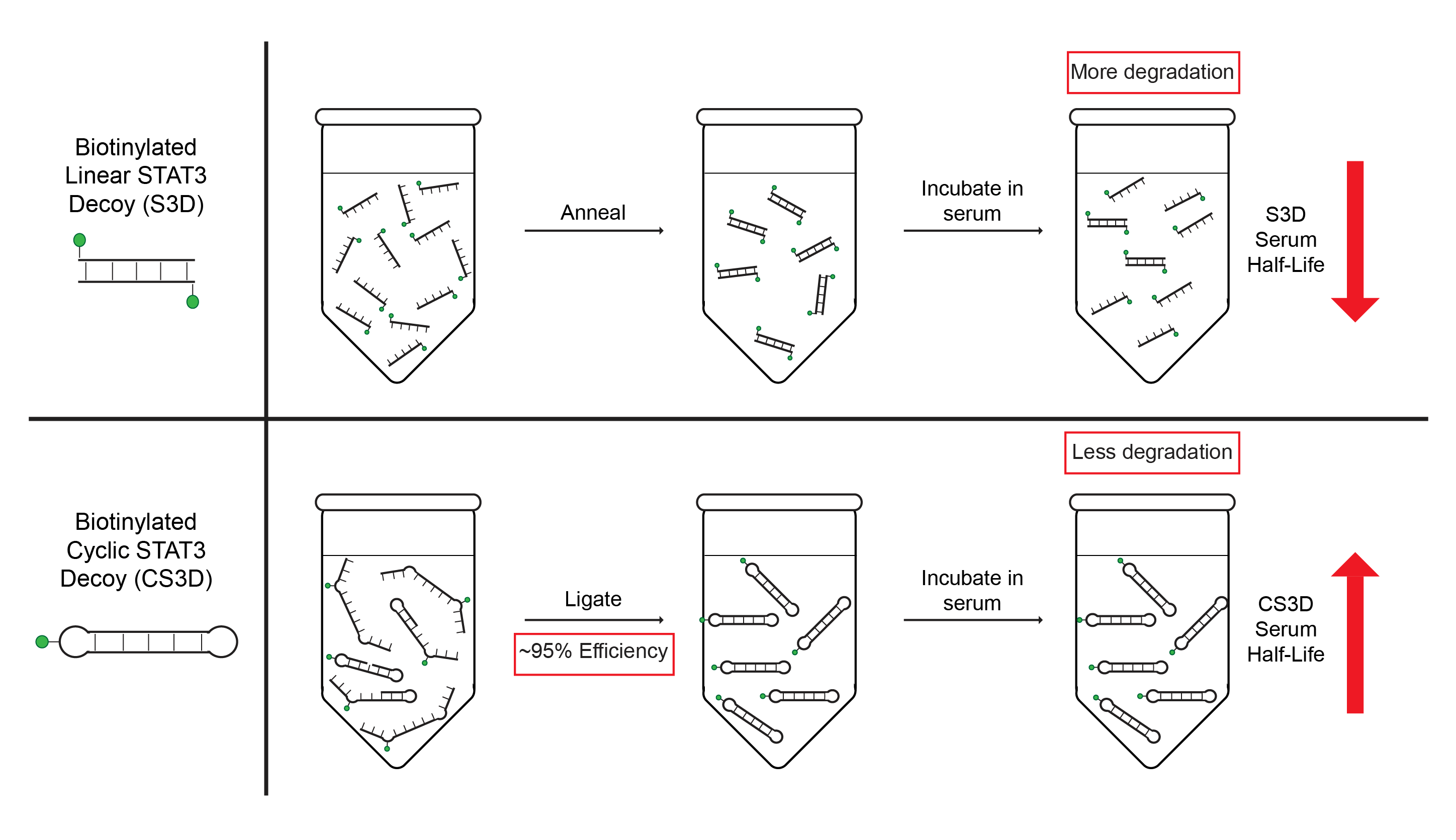Cyclic STAT3 decoy (CS3D) is a second-generation, double-stranded oligodeoxynucleotide (ODN) that mimics a genomic response element for signal transducer and activator of transcription 3 (STAT3), an oncogenic transcription factor. CS3D competitively inhibits STAT3 binding to target gene promoters, resulting in decreased expression of proteins that promote cellular proliferation and survival. Previous studies have demonstrated antitumor activity of CS3D in preclinical models of solid tumors. However, prior to entering human clinical trials, the efficiency of generating the CS3D molecule and its stability in biological fluids should be determined. CS3D is synthesized as a single-stranded ODN and must have its free ends ligated to generate the final cyclic form. In this study, we report a ligation efficiency of nearly 95 percent. The ligated CS3D demonstrated a half-life of 7.9 hours in human serum, indicating adequate stability for intravenous delivery. These results provide requisite biochemical characterization of CS3D that will inform upcoming clinical trials.

